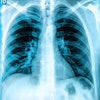
Editor's note: In his regular column, Europe's very own maverick radiologist, Dr. Peter Rinck, addresses the latest controversial topic. Find out now what's on his mind.
Medicine has a long history as a stomping ground for men, radiology being one of the salient disciplines. However, according to the Organization of Economic Cooperation and Development, women today make up 54% of physicians younger than age 35 in the U.S., 58% in France, and 64% in Spain.1
In 2009, women constituted only 27% of practicing radiologists in the U.S.,2 but looking at radiologists in training, women came up to 80% in Latvia, Estonia, and Belarus; more than 60% in other East and Southeast European countries; 60% in France, Croatia, Portugal, Denmark, Spain, Ireland, and Hungary; and in the 50% range in Belgium, Austria, Sweden, Finland, and Poland. The U.K., Germany, the Netherlands, and Albania still had more male than female radiologists in training.3 However, also in these countries the trend is going up and women will surpass men soon.
 Dr. Peter Rinck, PhD, Maître de Conférence and visiting professor of medical imaging at the University of Mons, Belgium.
Dr. Peter Rinck, PhD, Maître de Conférence and visiting professor of medical imaging at the University of Mons, Belgium.
Let's have a short look into the future at the European Congress of Radiology (ECR) in 2020: At the Grand Opening Session, the president of the congress, Maria Theresia Rubens, congratulates the ex-president, Jules Bocuse from France, for his contributions to French radiology and cuisine, and hints that he is not only intelligent but also rather handsome. At the end of her introductory talk, she suggests all women stand up and give a round of applause for him and men in radiology -- those few men left in the field.
Is this appropriate and acceptable behavior? Not in my book. Could it happen? It's rather unlikely. Has it happened? Yes, though the other way around. There was much rolling of eyes when this occurred at the ECR 2011 in Vienna. The suggestion that all men stand up and give a round of applause for a female award recipient and women in radiology in general did not go down smoothly with the women in the audience.
Official European or global radiology speeches at the ECR easily turn into eulogies of national radiological societies, some locally well-known radiologists -- mostly elderly men -- and a list of tourist attractions and pictures of young women in "typical" traditional costumes.
Earlier this year, the New York Times had several contributions on the "Female Factor," examining where women stand in the early 21st century. In an article about women in medicine, the author asked the following:
Will the feminization of medicine lead to losses in income and status? Will countries need to train and pay for more doctors to make up for maternity leaves, part-time schedules, and job sharing, which are often sought by female doctors trying to balance work with their personal lives?
Women in medicine are usually dedicated and have no problems working long days. In addition, they are more cautious and avoid unnecessary risks. They also seek help and discuss issues with their colleagues; they seem to be less anxious than men to lose face.
Yes, there will be maternity leaves and job sharing; however, if a department is well organized, such fluctuations are easily (and happily) adjusted to. All it takes is a grain of good will.
By the way, German researchers also detected signs of a female factor in treatment. A 2008 study in the Journal of Internal Medicine found that patients with type 2 diabetes responded better under the care of women, showing more improvement in blood pressure and cholesterol counts and taking their medicine doses. The researchers said female doctors were more likely to communicate well and involve patients in their own care.4
References
Carvajal D. The changing face of Western medicine. International Herald Tribune, Paris. Front page. 8 March 2011.
Boechat MI. Women in pediatric radiology. Pediatric Radiology. 2010;40(4):484-487.
Gould P. Data show shift toward more women in radiology departments. Diagnostic Imaging Europe. 2009;25(4):9.
Berthold HK, Gouni-Berthold I, Bestehorn KP, Böhm M, Krone W. Physician gender is associated with the quality of type 2 diabetes care. Journal of Internal Medicine. 2008;264(4):340-350.
The comments and observations expressed herein do not necessarily reflect the opinions of AuntMinnieEurope.com, nor should they be construed as an endorsement or admonishment of any particular vendor, analyst, industry consultant, or consulting group.



















